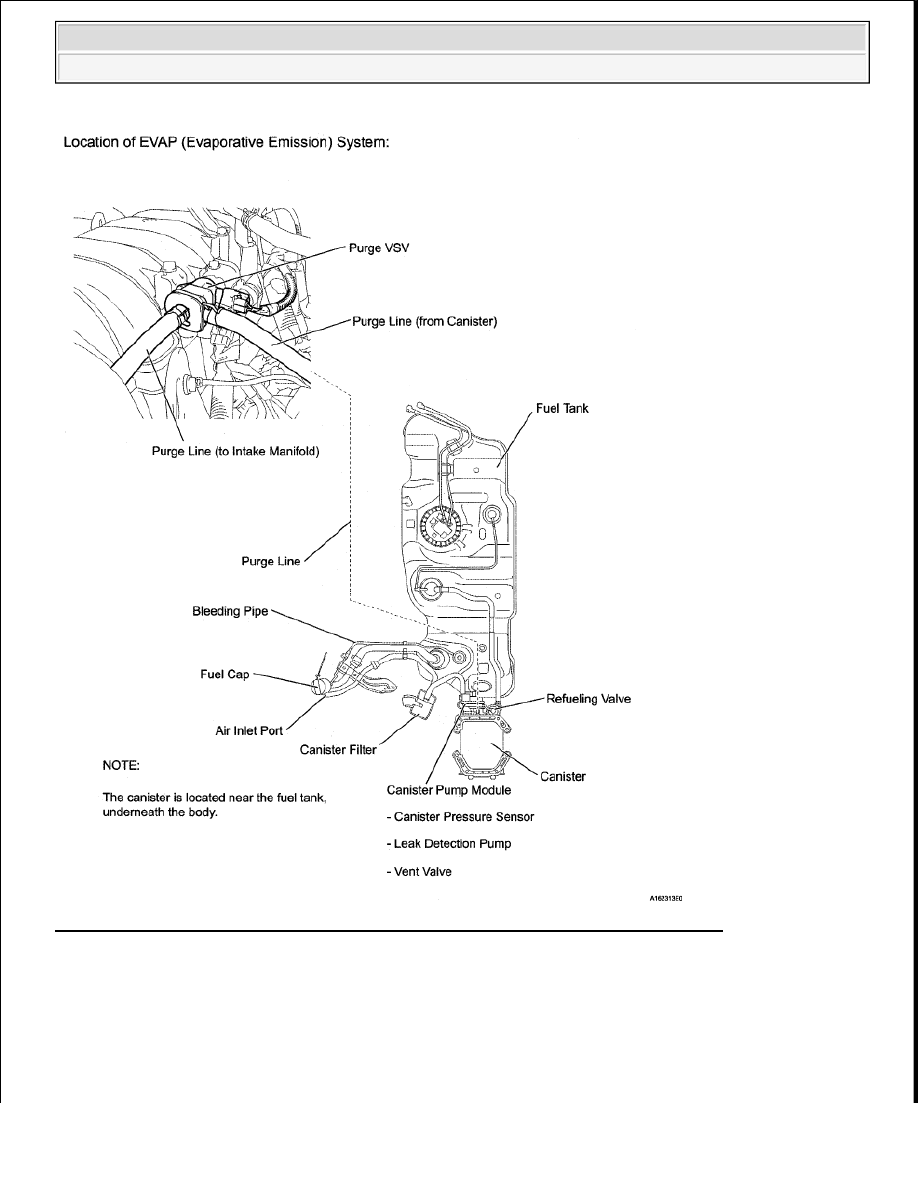Toyota Tundra. Manual — part 1438

If any EVAP system DTCs are set, the malfunctioning area can be determined using the table below.
module)
P043F
Reference orifice high-flow (built into canister pump
module)
P0441
Purge VSV (Vacuum Switching Valve) stuck
closed
Purge VSV stuck open
Purge flow
P0451
Canister pressure sensor (built into canister
pump module) noise
Canister pressure sensor (built into canister
pump module) signal becomes fixed/flat
P0452
Canister pressure sensor (built into canister pump
module) voltage low
P0453
Canister pressure sensor (built into canister pump
module) voltage high
P0455
EVAP gross leak
P0456
EVAP small leak
P2401
Leak detection pump stuck OFF (built into canister
pump module)
P2402
Leak detection pump stuck ON (built into canister
pump module)
P2419
Vent valve stuck closed (built into canister pump
module)
P2420
Vent valve stuck open (vent) (built into canister
pump module)
P2610
Soak timer (built into ECM)
2008 Toyota Tundra
2008 ENGINE PERFORMANCE Engine Control System (2UZ-FE) - Tundra

Fig. 244: DTC Chart
DESCRIPTION
NOTE:
If the reference pressure difference between the first and second checks is
greater than the specification, all the DTCs relating to the reference pressure
(P043E, P043F, P2401, P2402 and P2419) are stored.
2008 Toyota Tundra
2008 ENGINE PERFORMANCE Engine Control System (2UZ-FE) - Tundra

Fig. 245: Identifying Evaporative Emission System Replacement Components Location
2008 Toyota Tundra
2008 ENGINE PERFORMANCE Engine Control System (2UZ-FE) - Tundra

Fig. 246: EVAP System Circuit Diagram
While the engine is running, if a predetermined condition (closed-loop, etc.) is met, the purge VSV is opened by
the ECM and stored fuel vapors in the canister are purged into the intake manifold. The ECM changes the duty
cycle ratio of the purge VSV to control purge flow volume.
The purge flow volume is also determined by the intake manifold pressure. Atmospheric pressure is allowed
into the canister through the vent valve to ensure that the purge flow is maintained when the negative pressure
(vacuum) is applied to the canister.
The following two monitors run to confirm the appropriate EVAP system operation.
1. Key-off monitor
This monitor checks for EVAP (Evaporative Emission) system leaks and canister pump module
malfunctions. The monitor starts 5 hours* after the ignition switch is turned off. At least 5 hours are
required for the fuel to cool down to stabilize the EVAP pressure, thus making the EVAP system monitor
more accurate.
The leak detection pump creates negative pressure (vacuum) in the EVAP system and the pressure is
measured. Finally, the ECM monitors for leaks from the EVAP system, and malfunctions in both the
canister pump module and purge VSV, based on the EVAP pressure.
HINT:
*: If the engine coolant temperature is not below 35°C (95°F) 5 hours after the ignition switch is turned
NOTE:
In this vehicle's EVAP system, turning ON the vent valve does not seal off the
EVAP system. To check for leaks in the EVAP system, disconnect the air inlet
vent hose and apply pressure from the atmospheric side of the canister.
2008 Toyota Tundra
2008 ENGINE PERFORMANCE Engine Control System (2UZ-FE) - Tundra

Нет комментариевНе стесняйтесь поделиться с нами вашим ценным мнением.
Текст